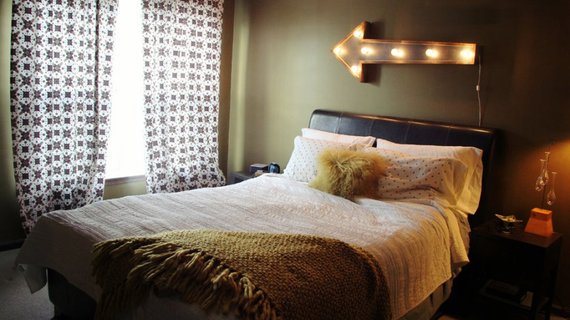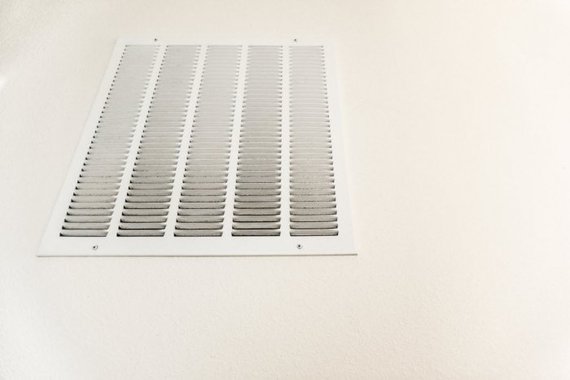Ensure a restful sleep by setting the ideal bedroom temperature with these HVAC tips.
An ideal sleeping room temperature can serve as one of the best natural sleep aids. Setting your bedroom's thermostat to the right temperature helps you sleep better and improves sleep cycles.
But bedrooms often present distinct air conditioning challenges, according to HVAC experts. However, following a few simple tricks can help you get to sleep in a comfortable bedroom, even during the hottest days of summer or coldest days of winter.
Douglas Erdmann, owner of Burkhardt Heating & Air Conditioning in Brown Deer, Wisconsin, says his clients prefer a wide range of sleeping temperatures. "On average, most people like their bedrooms to be a little cooler," he says. "You can always put a blanket on if you get too cold, but you can't make yourself cooler if the air is too warm."
A room temperature between 68 and 72 degrees seems to be the ideal sleeping room temperature for his clients, says Mike Brosseit, owner of Top Notch Heating, Cooling, & Plumbing in Lenexa, Kansas. "We tend to see people prefer it cooler at night than for when they're up and around," he says.
Don't ignore the HVAC filter
The first priority to help you get to sleep comfortably at night requires keeping your air conditioning system in good working order.
"The most important thing to do is make sure the equipment is serviced so it's operating at peak efficiency," Erdmann says. He recommends hiring a qualified professional to inspect and clean your HVAC system each spring, before the heavy A/C load begins. Check your filter frequently throughout the summer and replace it as needed; a dirty filter can seriously impact your air conditioner's efficiency.
He also suggests running the HVAC fan continuously during the summer, even when the A/C isn't operating, to equalize the flow of air throughout the house.
If you cool your bedroom or other rooms with ceiling fans, make sure to turn the directional switch on the fan to counter-clockwise in the summer to produce a cooling effect.
Don't close vents and doors
The most common problem HVAC contractors encounter with cooling bedrooms is that they frequently reside on the second stories of homes. "Most houses have one system, and the ductwork is often inadequate to cool the upstairs," Brosseit says. The second floor is often several degrees warmer than the downstairs, Erdmann adds.
Brosseit says some clients shut off vents and close off rooms in hopes of directing more air flow to other rooms, including the upstairs bedrooms. Not only does this not work, he says, it can make the situation worse and harms the air conditioner. "This adversely affects air flow," he says.
The solution lies in the exact opposite spot, Erdmann says. "It's not the air vents they should be closing off, but the return ducts," he says. "They're what draw in air and force more air into the space."
He suggests clearing the upstairs returns, and closing off one or two of the first-floor returns with saran wrap or some sort of cover, like a magnetic sheet. However, don't cover all the first-floor returns, as that can overwork the system.
Brosseit says homeowners can also use manual dampers in the duct work to direct more air flow upstairs. "On the ductwork trunks in the basement, there are often little levers on the side," he says. "If you rotate it back and forth, it opens or closes the damper. People often label them with a marker, either 'open/close' or 'summer/winter.'"
Locate the dampers that serve the ducts in upstairs bedrooms and open them to force more cool air upstairs during the summer.
Upgrade to a zoned system
A zoned HVAC system provides the most effective solution to ideal bedroom temperature, but it's also the most complex and expensive.
"A zoned system splits the floors, puts a second thermostat upstairs, and the system uses automatic dampers to direct all the cool air to the second floor," Erdmann says.
However, a zoned HVAC upgrade costs at least a few thousand dollars. According to Erdmann, most systems cost between $2,000 and $4,000, and it can go up to $8,000 for a large house with extensive zoning.
"If you're in your forever home, your dream home, it's worth the money to upgrade," he says. "It's a great, permanent solution."
This post originally ran on AngiesList.com and is part of a series produced by The Huffington Post and Angie's List on the topic of sleep. The series aims to educate readers about the dangers of sleep deprivation. Angie's List is here to help improve your home, offering more than 700 types of services for your family. For more information about Angie's List, visit AngiesList.com.

